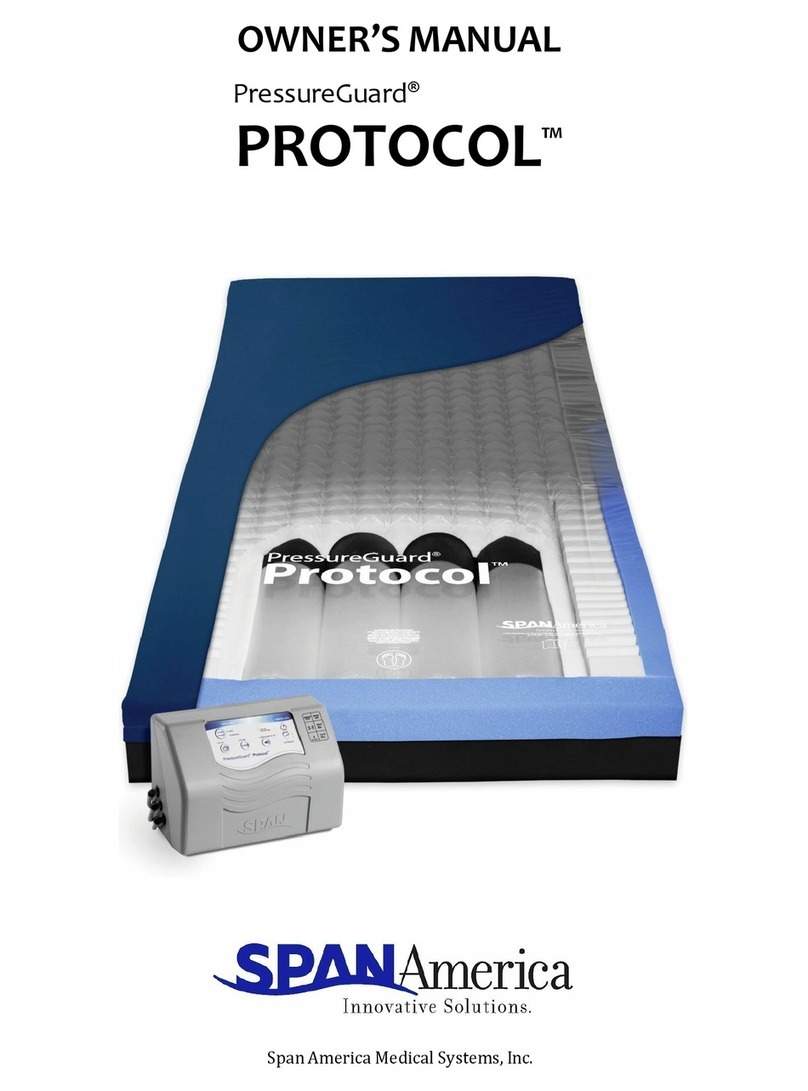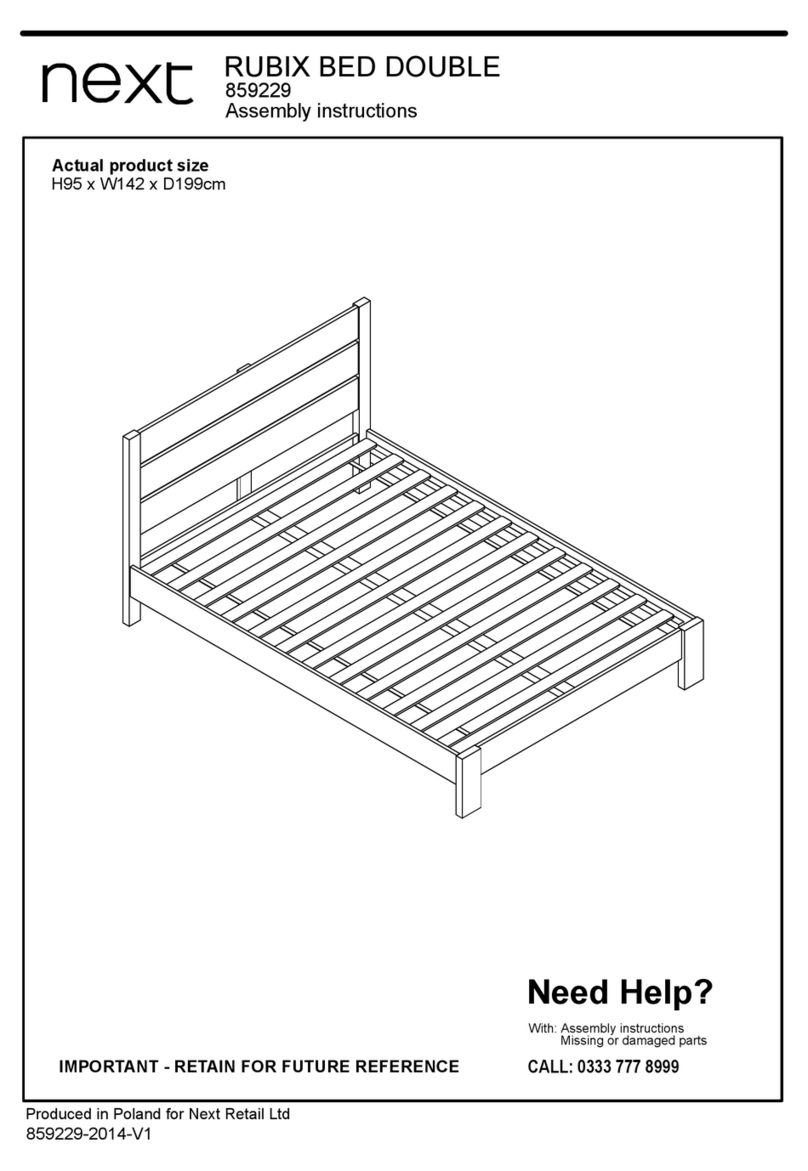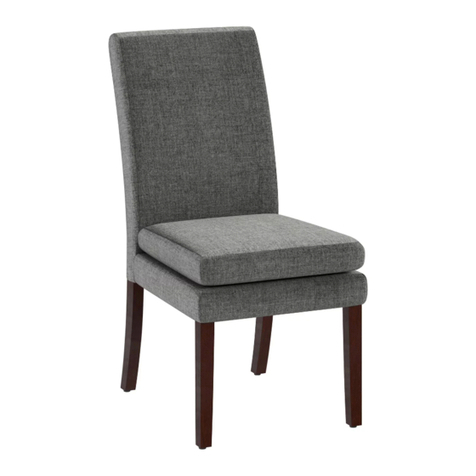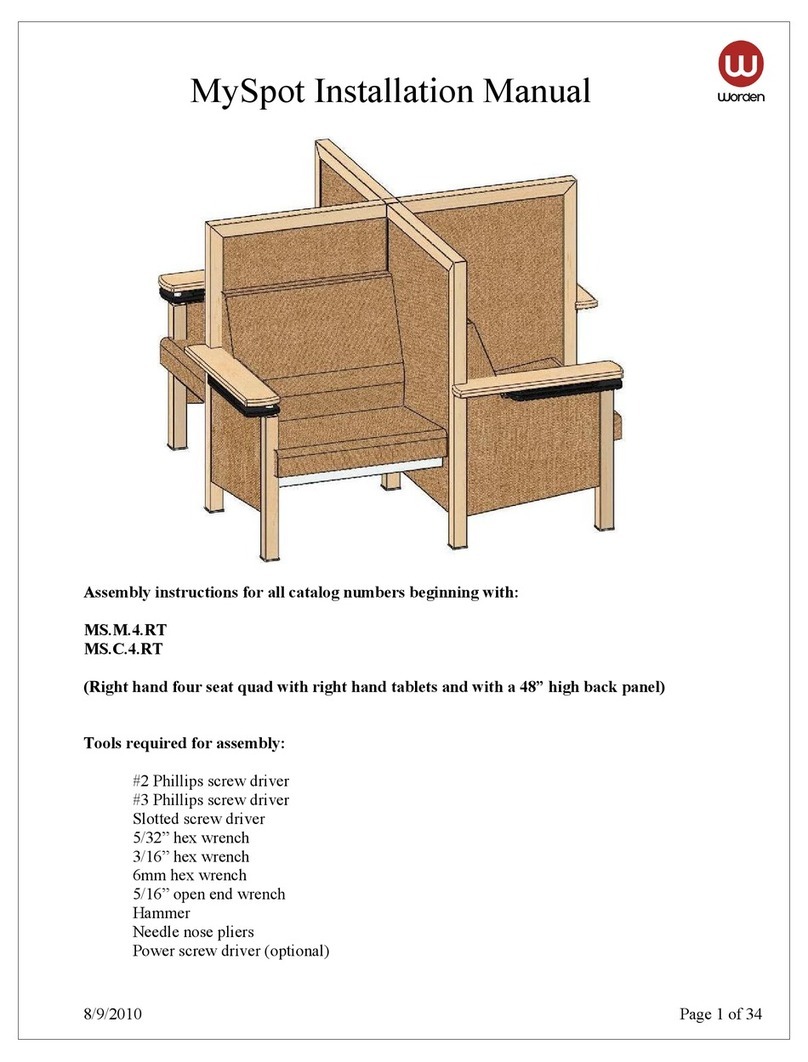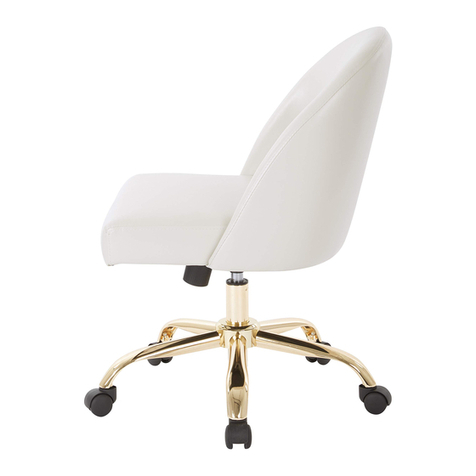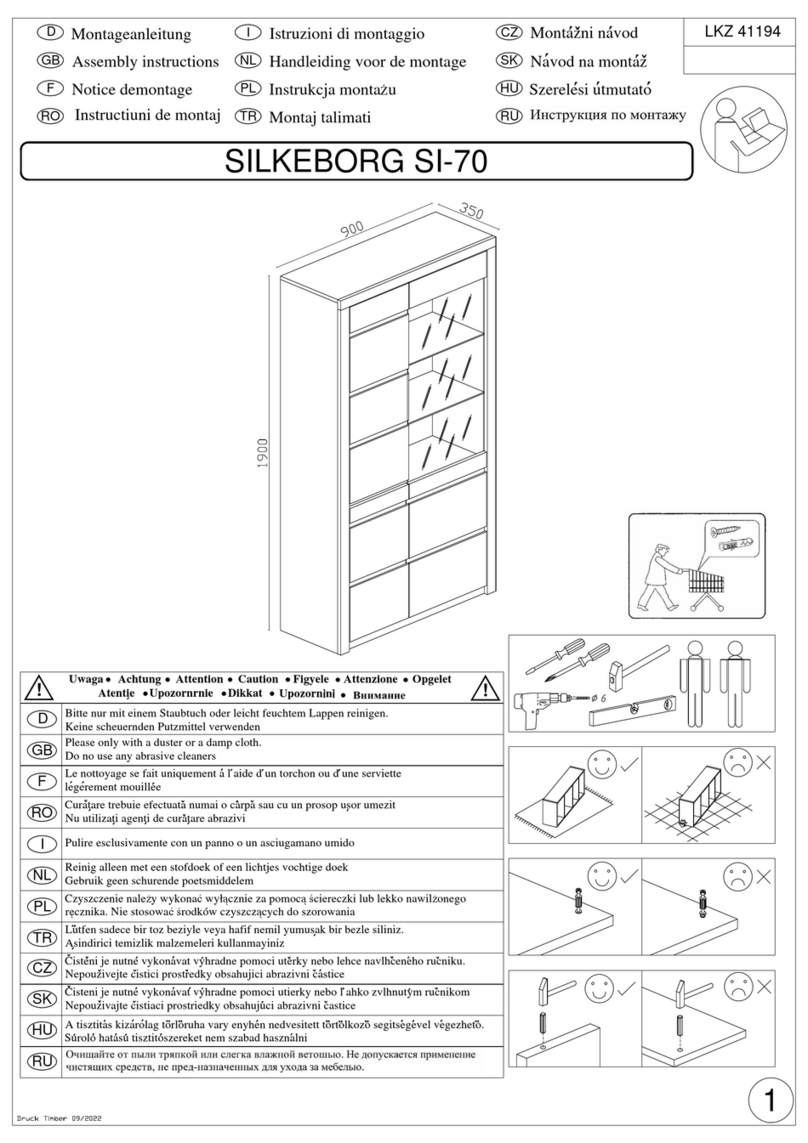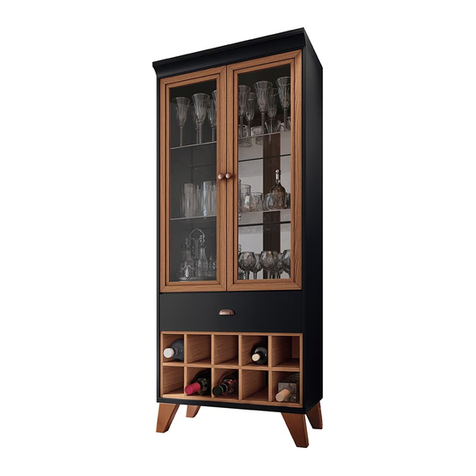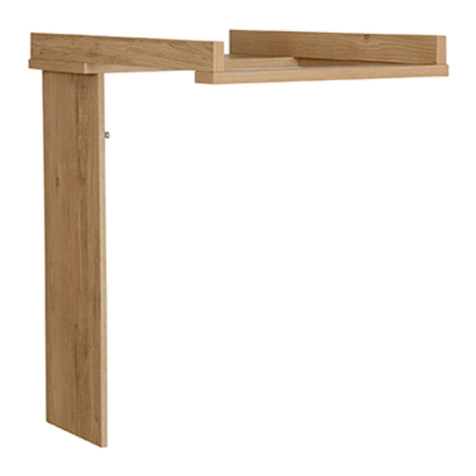SPAN PressureGuard APM User manual

PRESSUREGUARD APM
OWNER’S MANUAL
PressureGuard®APM
Span-America Medical Systems, Inc.
®

TABLE OF CONTENTS
DOCUMENT SYMBOLS ........................................................................................................................................ 1
INTRODUCTION..................................................................................................................................................... 3
Description
Intended Use
Indications for Use
Modes of Operation
CONSTRUCTION AND DESIGN FEATURES.................................................................................................. 5
DIRECTIONS FOR SET-UP AND USE .............................................................................................................. 6
CONTROL UNIT OPERATION ........................................................................................................................... 9
GENERAL DIRECTIONS.....................................................................................................................................10
Bed Linens
Bed Rails
CPR
Storage
Power Loss
Warranty
Use in Wound Care
TROUBLE SHOOTING ........................................................................................................................................11
MAINTENANCE ...................................................................................................................................................13
TECHNICAL DESCRIPTION..............................................................................................................................17
EMC INFROMATION...........................................................................................................................................18
ORDERING INFORMATION ............................................................................................................................21

1
P10773 R2CO# 2619
DOCUMENT SYMBOLS
This manual contains different typefaces and symbols to make the content easier to read and
understand:
•Standard text – used for regular information.
•Boldface text – stresses a word or phrase.
•NOTE: - sets apart special information or important instruction clarification.
•The symbol below identifies a WARNING or CAUTION:
- A WARNING identifies situations or actions that may have an effect on patient or user
safety. Ignoring a warning could cause patient or user injury.
•Un AVERTISSEMENT identifie des situations ou des actions qui peuvent affecter la sécurité du
patient ou de l’utilisateur. Ignorer un avertissement pourrait causer une blessure chez le patient ou
l’utilisateur.
- A CAUTION points out special procedures or precautions that persons must obey to
avoid equipment damage.
•Une PRÉCAUTION indique les procédures ou précautions spéciales que les personnes doivent
respecter pour ne pas endommager l’équipement.
•The symbol below identifies an ELECTRICAL SHOCK HAZARD WARNING:
•Le symbole ci-dessous identifie un AVERTISSEMENT DE RISQUE DE CHOC ÉLECTRIQUE :
•Complies with standards protecting against electric shock for Type BF applied part.
•Class II Equipment

2
P10773 R2CO# 2619
•: ON (power: connection to the mains)
•: OFF (power: disconnection from the mains)
Warning: This product contains/may contain chemicals known to the state of California to cause
cancer and/or birth defects or other reproductive harm.

3
P10773 R2CO# 2619
INTRODUCTION TO PRESSUREGUARD® APM
Alternating Pressure Mattresses
DESCRIPTION: The system consists of a foam shell with a high-density foam topper serving
as the support surface underneath the patient. The foam shell also includes contoured foam
bolsters at the sides and ends of the mattress, providing added patient stability and positioning.
The system also includes the unique Heel Slope™feature, designed to further reduce pressure for
the sensitive heel area. Within the foam shell is housed the inflation system, consisting of air
cylinders which run lengthwise within the mattress. The air Control Unit connects to the
mattress at the patient foot-end.
The system has been tested and successfully approved to the following standards:
FOR US AND CANADA ONLY
INTENDED USE: A powered, alternating pressure management system used for the prevention
and treatment of pressure injuries.
INDICATIONS FOR USE: The PressureGuard®APM (Alternating Pressure Mattress) is a
powered, flotation therapy mattresses providing a pressure redistribution surface for the
prevention and treatment of pressure injuries.
MODES OF OPERATION: The PressureGuard®APM provides alternating pressure in 10-
minute cycles.
WARNING - To reduce the risk of electrocution
READ ALL INSTRUCTIONS BEFORE USING THIS UNIT.
1. Always unplug this unit immediately after using.
2. Do not operate near water.
3. Do not place or store product where it can fall or be pulled into a tub or sink.
4. Do not place in or drop into water or other liquid.
5. Do not reach for a product that has fallen into water. Unplug immediately.
6. Use this unit only for its intended use as described in the operating instructions.
7. Never operate this product if it has a damaged cord or plug, if it is not working properly, if it
has been dropped or damaged, or dropped into water. Contact Span-America Medical
Systems, Inc., for return of Control Unit for examination and repair.
8. Keep the cord away from heated surfaces.
Certified for Medical Equipment-Air Pump with respect to electrical
shock, fire and mechanical hazards only in accordance with
UL60601-1 AND CAN/CSA C22.2 NO.601.1
Le produit à été testé avec des équipements médicaux et
respecte les normes UL 60601-1 & CAN/CSA C22.2 No.601.1.
prévenant les choc électrique, le feu et les risques de blessures
physiques.

4
P10773 R2CO# 2619
9. Never drop or insert any object into any opening or hose.
10. Do not use outdoors.
AVERTISSEMENT – Pour diminuer les risques de brûlures, d’électrocution, d’incendie ou de
blessure aux personnes : LISEZ TOUTES LES CONSIGNES AVANT D’UTILISER CETTE
UNITÉ.
1. Débranchez toujours cette unité immédiatement après usage.
2. Ne l’utilisez pas près d’une source d’eau.
3. Ne placez pas ou n’entreposez pas le produit à un endroit où il pourrait tomber dans un bac ou une cuvette.
4. Ne le placez pas ou ne le laissez pas tomber dans l’eau ou un autre liquide.
5. N’essayez pas de récupérer un produit qui est tombé dans l’eau. Débranchez-le immédiatement.
6. Utilisez cette unité uniquement dans le cadre de son utilisation prévue comme décrit dans les consignes
d’utilisation.
7. N’utilisez jamais ce produit si un cordon ou une prise est endommagé, s’il ne fonctionne pas correctement, s’il a
été laissé tombé ou endommagé, ou s’il est tombé dans l’eau. Retournez l’unité à Span-AmericaMedical
Systems, Inc. pour une inspection et une réparation.
8. Maintenez le cordon éloigné des surfaces chauffées.
9. Ne laissez jamais tomber ou n’introduisez jamais un objet dans une ouverture ou un tuyau flexible.
10. Ne l’utilisez pas à l’extérieur.
WARNING: POSSIBLE EXPLOSION HAZARD IF USED IN THE PRESENCE OF
FLAMMABLE ANESTHETICS.
RISQUE D'EXPLOSION NE PAS EMPLOYER PRES DE GAZ ANESTHESEQUES
INFLAMMABLES.
Cover
Foam Topper with
Geo-Matt design
Air Cylinders
Safety Edge bolster
Model 5500 – Powered control unit

5
P10773 R2CO# 2619
CONSTRUCTION AND DESIGN FEATURES
llustration Descriptions
The air-cylinder inflation system and the foam shell work in concert to maintain low interface pressures
throughout the surface, making the APM family of mattresses effective for prevention and treatment of
pressure injuries.
Cover
[Illustration item ]
The bacteriostatic top fabric is fire resistant, fluidproof, tear resistant,
cleanable, and replaceable. The pleated design allows full integration with
the mattress’s Geo-Matt style shear-
relieving surface while minimizing
hammocking.
Foam Topper:
[Illustration item ]
The Geo-Matt®
style foam topper is a high density, medical grade foam.
The unique geometric design consists of over 800 individual cells, each of
which acts individually to redistribute pressure, to reduce heat and moisture
buildup on the skin, and to reduce shear to underlying tissues. This foam
topper is 2" in height and includes the unique Heel Slope™ feature, designed
to further reduce pressure for the sensitive heel area.
Safety Edge™ Bolsters
[Illustration item ]
The Safety Edge™ consists of contoured foam bolsters around the sides and
ends of the mattress for added patient stability in sitting and lying down.
Air Cylinders:
[Illustration item ]
The inflation system consists of four urethane air cylinders, that run head to
foot underneath the body and the foam topper. These cylinders perform the
alternating pressure therapy, and the lateral rotation therapy in the APM
model. Cylinders inflate and deflate in a fixed 8-minute cycle. The cycles
and inflatio
n levels are designed to provide and maintain low interface
pressures throughout the mattress, and to redistribute peak interface
pressure points during the alternating cycle.
Control Unit:
[Illustration item ]
Model 5500 – Powered control unit with comfort level adjustment, mode
selection (alternating or float), and low pressure indicator.

6
DIRECTIONS FOR SET-UP and USE
PRESSUREGUARD APM WITH 5500 CONTROL UNIT
1. Place the PressureGuard®mattress on the bed frame with the airline connectors at the
foot end of the bed. The mattress has a gray vinyl side that should be down on the bed
frame, and a green or silver fabric side that should be face up toward the patient.
Confirm that the bed frame is appropriate for use with the mattress, and that the
length and width of the mattress are appropriate for the frame. Place directly on a
healthcare bedframe only, never on top of another mattress.
WARNING: The fit of the mattress to the bed frame is important. Minimizing
spaces or gaps between the mattress and frame will help prevent patient
entrapment issues.
AVERTISSEMENT : Il est important que le matelas corresponde au cadre de lit. Minimiser
les espaces et les écarts entre le matelas et le cadre de lit évitera le risque de piégeage du
patient.
2. Hang the control unit on the foot board
at the end of the bed using fold-out
hangers (Figure A). Connect airlines to
control unit by pressing quick connector
into port on the side of unit. “Triangle”
symbol should face front. (Figure B)
Audible “click” indicates secure
connection.
Note: If desired, hanger lock strip (included,
item # P10064, Fig. C) can be used to help hold control unit more snugly in place on thin
footboards such as those often found on home health care beds. To use, place the strip in
position around the hanger hooks as shown in Figure D.
3. Connect the ends of the air lines with two right angle male
connectors (Figure E) to the ports on the side of the
mattress. Ports are located beneath a fabric flap near the right
front corner of the mattress. Ensure that the airlines are not
kinked or twisted. Press connectors into ports until you hear
an audible “click” for each. Press flap closed.
Figure A
Figure B
Figure C
Figure D
Figure E
P10773 R2CO# 2619

7
P10773 R2CO# 2619
4. Ensure that green On/Off switch at side of control unit is “Off”. Plug power cord into
wall outlet. Press On/Off switch “ON”.
CAUTION: Never thread airline through mechanical parts of the bed or bed rails where normal
bed movement may damage the airlines or the air control unit itself. Check to be sure the routing of
the air lines or the motion of the bed does not impede air flow by crimping the air lines
ATTENTION : N’insérez jamais une conduite d’air à travers les pièces mécaniques du lit ou les
côtés de lit là où le mouvement normal du lit peut endommager les conduites d’air ou l’unité de
commande de l’air. Assurez-vous que l’acheminement des conduites d’air ou le mouvement du lit
n’entrave pas la circulation de l’air en pinçant les conduites d’air..
Always plug the power cable securely into the wall outlet. Make sure the wall-mounted outlet will
accommodate a heavy duty or hospital-grade plug and that the outlet is in good working order. The plug of
the power cord should fit tightly into the wall outlet. The plug body, the wall outlet, and the wall plate should
not be cracked or chipped. The plug blades should be securely retained in the plug body.
Branchez toujours le câble d’alimentation solidement dans la prise murale. Assurez-vous que la prise murale
peut accueillir une prise pour service intensif ou de qualité hôpital et que la prise est en bon état de marche.
La prise du cordon d’alimentation doit parfaitement s’insérer dans la prise murale. La prise-culot, la prise
murale et la plaque murale ne doivent pas être craquées ou ébréchées. Les lames de contact de la prise
doivent être solidement retenues dans la prise-culot.
Do not connect the power cord to an extension cord or to a multiple outlet strip. If the use of extension
cords or multiple outlet strips cannot be avoided, use only heavy duty or hospital-grade connectors that
are approved by the facility engineering department. Multiple outlet strips should be mounted on a
fixed object to reduce the risk of liquid spills and physical damage. In addition, if multiple-receptacle
outlet boxes are used, they also should be protected from the risk of liquid spills and physical damage.
All extension cords and multiple outlet strips should be tagged and inspected routinely.
Ne connectez pas le cordon d’alimentation à une rallonge ou une barre multiprise. Si l’utilisation de rallonges
ou de barres multiprise ne peut pas être évitée, utilisez uniquement des connecteurs pour service continu ou
de qualité hôpital approuvés par le département d’ingénierie de l’établissement. Les barres multiprise
doivent être montées sur un objet fixe pour réduire le risque de déversement de liquide et de dommage
matériel. En outre, si des boîtes de sortie multiples sont utilisées, elles doivent également être protégées contre
le risque de déversement de liquide et de dommage matériel. Toutes les rallonges et les barres multiprise
doivent être marquées et inspectées périodiquement.
Do not cover the power cord with a rug or carpet. Rugs or carpets can prevent normal air flow, which
can lead to greater heat built-up. Place the cord in a low or no traffic area. Check to be sure the motion
of the bed does not interfere with the bed’s power cord or plug.
Ne couvrez pas le cordon d’alimentation avec un tapis ou une moquette. Les tapis et moquettes peuvent
empêcher la circulation normale de l’air, ce qui peut causer une plus grande accumulation de chaleur. Placez
le cordon dans une zone peu fréquentée ou sans passage. Assurez-vous que le mouvement du lit n’interfère
pas avec le cordon d’alimentation du lit ou la prise.

8
P10773 R2CO# 2619
5.When power switch is turned to ON, the unit will begin performing a system check. This
fills the air system completely, in order to confirm the proper connection and function
of both the mattress and the control unit prior to a patient being placed on the surface.
If the mattress is completely empty of air, this can take as long as 20 minutes. Since this
is rarely the case, however, this typically takes no more than 2.5 minutes.
6. The “Low Pressure” indicator light will remain on until this process is complete.
7. When system check is complete, “Low Pressure” indicator light will turn off and “normal
pressure” light will turn on. System is now ready to be set for the next user.
NOTE: If “Low Pressure” remains on after 30 minutes, call for service.

9
P10773 R2CO# 2619
CONTROL UNIT OPERATION
Comfort Level Selection:
Allows selection of air cylinder firmness within a
relatively small range. Use knob to achieve desired
setting. Begin in softest setting, then adjust for
comfort as desired.
Mode Selection: Press rocker switch to select “Alternate” or “Float.
“Alternate” mode: With mattress toggle switch set
to “Alternating Pressure”, air cylinders 1 and 3
inflate while 2 and 4 deflate. After approximately 5
minutes, the pattern reverses.
“Float” (powered flotation therapy) mode:
Suspends cyclical inflation/deflation of the air
cylinders and instead provides powered flotation
therapy. In this mode, all four air cylinders are
evenly inflated, and the system maintains ideal
pressure management by adjusting in response to
any repositioning of the user on the surface.
Low Pressure Indicator:
Low Pressure:
If “Low Pressure” indicator light comes on after
initial set-up or when moving mattress or control
unit, first check that all airlines are properly
connected and that they are not kinked. If light is
still on after 30 minutes, call for service.

10
P10773 R2CO# 2619
GENERAL DIRECTIONS
BED LINENS: Use flat sheets, knitted stretch-fit sheets, or deep-pocket fitted sheets. Use as few
layers of linens or underpads beneath the patient as possible to allow best possible envelopment,
immersion and pressure management performance.
CAUTION: Be careful not to puncture the mattress with needles or sharp instruments.
This may result in loss of integrity of the cover or internal air system. Regularly inspect
the mattress cover for cuts, rips, cracks or tears. Do not use the mattress if the cover is
damaged.
MISE EN GARDE : Faire attention de ne pas percer le matelas avec des aiguilles ou des
instruments tranchants. Cela peut entraîner la perte de l'intégrité de la housse ou du
système d'air interne. Inspecter régulièrement la housse du matelas pour des coupures,
déchirures, fentes ou fissures. Ne pas utiliser le matelas si la housse est endommagée
BED RAILS: Due to concerns over the possibility of patient entrapment, Span-America
recognizes that the use of rails of any length is a matter currently addressed by federal and state
laws/guidelines, and by individual facility protocol. It is the responsibility of the facility to be in
compliance with these laws, which typically require that decisions on the use of bed rails of any
type are based on assessment of the physical and mental status of each patient individually. If
bedrails are needed by the patient to prevent fall-related injury, as determined by this facility
assessment, we recommend that the bedrails be locked in the up position at all times. We do not
require use of bedrails unless the patient is deemed to be safer with them than without them.
CPR: The Standards for Life Support recommended by the American Heart Association for
performing CPR recommend a hard level surface for performing CPR. This means moving the
person to the floor if possible.
For performing CPR on the PressureGuard®APM
1. Place a crashboard beneath the patient.
2. Select the “Float” mode.
3. Set the Control Knob to FIRMER
4. Follow CPR procedures.
STORAGE AND TRANSPORTATION: Store the mattresses in a clean, dry place. Once the
mattress is removed from the box, store in a flat position if possible. If mattress must be stored
on its side, ensure that the inflation system is in correct position within the mattress prior to
placing a user on the surface. Protect from damage. Avoid temperature extremes (below freezing
or above 120oF). Allow to acclimate to room temperature before use. Do no stack more than 10
high. Do not stack other equipment on top of the mattresses.
Store the control unit in a clean, dry place, protected from accidental damage or falls. Avoid
temperature extremes (below freezing or above 120°F). Do not stack other equipment on top of
the control unit. Avoid storage of other equipment on top of the mattress. When removing the
mattress from storage, always ensure the internal inflation system is aligned correctly prior to
placing a patient on the surface For transportation, secure to prevent damage or falls. For

11
P10773 R2CO# 2619
shipment, use box and packaging as provided by the manufacturer.
ELECTROMAGNETIC OR OTHER INTERFERENCE – see Appendix on page 15.
This equipment generates, uses and can radiate radio frequency energy and, if not installed and
used in accordance with the instructions, may cause harmful interference to other devices in the
vicinity. However, there is no guarantee that interference will not occur in a particular
installation.
If this equipment does cause harmful interference to other devices, which can be determined by
turning the equipment off and on, the user is encouraged to try to correct the interference by one
or more of the following measures:
-Reorient or relocate the receiving device.
-Increase the separation between the equipment.
- Connect the equipment into an outlet on a circuit different from that to which
the other device(s) are connected.
- Consult the manufacturer for help.
HEAD-OF-BED ELEVATION: All support surfaces using air as a support medium are designed
for distributing pressures over the body in a flat, horizontal position. Bending the support
surface and the body at the midpoint when elevating the HOB concentrates the body weight over
the center of the surface, stressing that small area. This extreme change in dynamics creates a
challenge for all air support surfaces. Maximum pressure management benefits are realized
between zero and 30 degrees HOB elevation. Beyond 30 degrees, the amplitude of the changes
in the air cylinders begins to decrease in proportion to the increased elevation of the HOB.
POWER LOSS / PATIENT TRANSPORT:
To seal air into mattress, simply disconnect the quick connector from
the control unit, and place “transport” cap into place on connector
(Figure F). Press cap into place until you hear a “click”, which
confirms that the airlines are sealed. With the transport cap in place,
all the air is sealed into the mattress. In this mode, the cylinders will
distribute air evenly among the cylinders, providing an even, static air
surface to protect the user’s skin until power is restored.
WARNING: DO NOT MOVE USER ON MATTRESS WITHOUT BED.
Mattress should not be used alone for user/patient transport.
ATTENTION : NE DÉPLACEZ PAS LE PATIENT SUR LE MATELAS SANS LE LIT.
Le matelas ne doit pas être utilisé seul pour le transport du patient.
TROUBLESHOOTING PATIENT COMPLAINTS: Occasionally a patient will complain of
feeling as if they are “sinking into a hole”.
Figure F

12
P10773 R2CO# 2619
1. Sometimes this happens when the head of the bed is elevated and the mattress is in
alternating pressure mode. This sensation is a combination of the deflation of the
cylinders during their cycle and the increased weight of the patient on the sacrum and
pelvis when the head of the bed is elevated. This demonstrates the need to minimize
elevation of the head of the bed. To improve this situation, decrease elevation of the head
of the bed.
2. Often patients complain when they are supine or side-lying and are not used to the
changing pressures within the air system. Reassure the resident that this is normal
functioning, as the cylinders alternately inflate and deflate. The “deflated” tubes are not
fully deflated. Some air is always maintained in them to prevent bottoming out. After
reassurance, patients get used to the changing pressures.
WARRANTY: All models are unconditionally guaranteed against failure due to manufacturing
defects under normal use for 18 months.
WOUND CARE: Use of PressureGuard® APM model is only one element of care in the
prevention and treatment of pressure injuries. Frequent repositioning, proper care, routine skin
assessment, wound treatment and proper nutrition are but a few of the elements required in the
prevention and treatment of pressure injuries. As there are many factors that may influence the
development of a pressure injury for each individual, the ultimate responsibility in the prevention
and treatment of pressure injuries is with the health care professional.

13
P10773 R2CO# 2619
MAINTENANCE
CLEANING: For the mattress, only the cover requires cleaning and maintenance. Disassembly
of the support surface for maintenance of internal components is not recommended. Clean and
disinfect mattress covers following contamination with bodily fluids and between patients. The
cover can be cleaned in place by wiping with neutral suds and lukewarm water. Rinse and allow
to air dry for approximately 20-30 minutes before use. For hard to clean spots, use liquid cleaner
with soft sponge in the concentration recommended by the manufacturer. DO NOT USE
HARSH CLEANERS OR SOLVENTS.
For long-term incontinent applications, clean and disinfect cover daily. A scented
cleaner/disinfectant is recommended. Iodophor type disinfectants (e.g. Betadine) will stain the
fabric.
For disinfection, phenolic or quaternary type disinfectants are recommended. Disinfectants
should be hospital grade (tuberculocidal). Follow manufacturer’s instructions for use
concentrations, contact times and rinsing.
Contamination with blood on the fabric can be disinfected with a 1:10 dilution of household
bleach (5.25% sodium hypochlorite) as recommended by the CDC. The use of bleach at
improper dilutions may result in fabric discoloration and fluid pass-through.
Where surveillance and epidemiology indicate ongoing transmission of C. difficile, an EPA
registered hypochlorite-based disinfectant is recommended. Follow the manufacturer’s
instructions for use concentrations, contact times and rinsing. Generic sources of hypochlorite
(e.g. household chlorine bleach) may also be used. Prepare the disinfection solution fresh daily at
a 1:10 dilution. Improper dilutions may result in ineffectiveness and higher than recommended
concentrations will damage the fabric.
Note: Alcohol-based disinfectants are not effective against C. difficile and should not be used to
disinfect environmental services. For further information relative to this organism and infection
control in the healthcare setting, please refer to www.cdc.gov/ncidod/hip.
Do not puncture the mattress with needles or sharp instruments. This may result in loss of
integrity of the mattress air system and will void the warranty. Inspect the covers and zipper area
for signs of damage, puncture, or wear that could result in fluid pass-through. If the cover is
stained, soiled, or torn, inspect the internal components for signs of contamination. If
contamination is evident, quarantine the mattress and remove from service following infection
control procedures.
It is important to follow the cleaning procedures before first-time use with any
patient; this is to avoid the possibility of transmission of pathogens between patients

14
P10773 R2CO# 2619
and caregivers.
Wipe down the pump unit with a damp cloth pre-soaked with a mild detergent. Avoid
contact with dust and proximity to dusty areas. Make sure that any cleaning agents
you use will not harm or corrode the plastic casing on the pump unit. All
components should be air dried thoroughly before use.
CAUTION: Do not immerse or soak the pump unit in liquids.
Ne laissez pas de liquides s’infiltrer dans le panneau de l’utilisateur.
Disconnect air lines from control unit and use “transport” cap to seal air into mattress (see
PATIENT TRANSPORT) page 9.
Turn unit off and unplug from wall before cleaning. Wipe down with using damp sponge or
cloth that has been thoroughly wrung out to remove excess liquid.
Éteignez l’unité de commande et débranchez-la avant de la nettoyer. Essuyez avec une éponge
humide ou un chiffon soigneusement essoré pour enlever l’excédent de liquide.
ROUTINE INSPECTION OF POWER CORDS AND SAFETY TIPS TO PREVENT FIRES
1. Assure that the electrical resistance of the safety ground conductor and the level of leakage
current (line conductor-to-safety ground and neutral conductor-to-safety ground) meet
applicable standards for resistivity and leakage current. Protection afforded by the ground pin
is negated if the receptacle is not properly grounded. If you have questions about the
adequacy of your facility’s building wiring, contact qualified electrician or consult the code
authority in your jurisdiction.
2. Check all electrical outlets, including accessory outlets for cleanliness, physical integrity and
functionality. The IEEE standard 602-1996, section 4.2.2 advises that hospital-grade outlets be
used and that they should be mounted with the ground pin or neutral blade up to assure that
any metal that may drop between the plug and the wall will most likely contact an unenergized
blade.
3. Check the power cord to assure that contact pins are straight and secure
4. Routinely inspect the power cord for damage sustained from crushing, pinching, shearing,
cutting, or from being worn through. They can be damaged by bed movement, deterioration
from use or aging, or human or equipment traffic. The cord’s insulation should be intact and
there should be no evidence of bulging, stretching, crimping, cracking, or discoloration,
especially at the ends, there the cord is attached to the plug body and the control unit.
5. Regularly inspect as parts of the bed frame, motor, mattress and controller, and the floor
beneath and near the bed for build-up of dust and lint.
6. Inspect the cover of the control panel to assure that the covering is not cracked or damaged,
allowing liquids or other conductive material to penetrate to the switches.

15
P10773 R2CO# 2619
7. Report any unusual sounds, burning odors, or anything unusual to maintenance personnel.
Discontinue use of the power cord immediately and contact Span-America Medical Systems,
Inc. for replacement.
INSPECTION DE ROUTINE DES CORDONS D’ALIMENTATION ET CONSEILS DE SÉCURITÉ POUR
EMPÊCHER UN INCENDIE
1. Assurez-vous que la résistance électrique du conducteur de la prise de terre de sécurité et le niveau de
courant de fuite (conducteur d’alimentation à la prise de terre de sécurité et conducteur neutre à la prise de
terre de sécurité) satisfont les normes applicables en matière de résistivité et de courant de fuite. La
protection fournie par le contact à la masse est annulée si la prise n’est pas correctement mise à la terre. Si
vous avez des questions sur l’adéquation de l’installation électrique de votre établissement, contactez un
électricien qualifié ou consultez l’autorité compétente de votre juridiction.
2. Vérifiez toutes les prises électriques, y compris les prises accessoires pour vous assurer de leur propreté, de
leur intégrité physique et de leur fonctionnalité. La norme IEEE 602-1996, section 4.2.2 conseille l’utilisation
de prises de qualité hôpital et de les monter avec le contact à la masse ou la lame de contact neutre en haut
pour s’assurer qu’un objet métallique qui pourrait tomber entre la prise et le mur soit plus susceptible
d’entrer en contact avec une lame hors tension.
3.Vérifiez le cordon d’alimentation pour vous assurer que les contacts à la masse sont droits et fixés
solidement
4. Inspectez régulièrement le cordon d'alimentation pour vous assurer qu'il n'est pas écrasé, pincé, cisaillé,
coupé ou usé. Il peut être endommagé par le mouvement du lit, une détérioration due à l’usage ou à l’âge, ou
le trafic humain ou de l’équipement. L’isolation du cordon doit être intacte et il ne doit y avoir aucune trace
de gonflement, d’étirement, d’ondulation, de fissure ou de décoloration, particulièrement aux extrémités, là
où le cordon est fixé à la prise-culot et à l’unité de commande.
5. Inspectez régulièrement le cadre de lit, le moteur, le matelas et le contrôleur, et le sol sous et près du lit
pour détecter l’accumulation de saleté et de peluches.
6. Inspectez le couvercle du panneau de commande pour vous assurer qu'il n'est pas fissuré ou endommagé,
permettant aux liquides ou à d'autres matériaux conducteurs de pénétrer dans les interrupteurs.
7. Rapportez les sons inhabituels, les odeurs de brûlure ou toute autre chose inhabituelle au personnel
d'entretien. Arrêtez immédiatement d’utiliser le cordon d’alimentation et contactez Span-America Medical
Systems pour le remplacement.

16
P10773 R2CO# 2619
Mattress
Inspect the covers and zipper area for signs of damage, puncture, or wear that could result in
fluid pass-through. If the cover is stained, soiled, or torn, inspect the internal components for
signs of contamination. If contamination is evident, quarantine the mattress and remove from
service following infection control procedures.
You may use the Preventive Maintenance Log provided on the last page of this manual to
monitor and document regular inspection and maintenance of your mattress and control unit.
AIR FILTER PREVENTIVE MAINTENANCE: The air filter for the Control Unit should be
checked routinely for signs of dirt or contamination. The frequency for cleaning depends on the
air quality. The air filter is accessible from the back of the Control Unit and is covered by a
removable tan colored cover. As the filter is white, the need to clean is obvious. Simply remove
the cover, remove the filter, and hand wash using warm water and mild detergent. Rinse
thoroughly and allow to air dry. Replace the filter and clip the cover back into place.

17
P10773 R2CO# 2619
TECHNICAL DESCRIPTION
MATTRESS Cover - Bacteriostatic, flame resistant, fluidproof, tear resistant
COMPONENTS: Foam - High-density open-cell polyurethane. Conforms to NFPA
101 small scale and Cal TB# 117:2013.
Air Cylinders - Urethane and/or Fabric Coated PVC
ELECTRICAL: 5500 Model: AC 100-120V, 60 Hz, 0.16 A 14W.
Fuse Rating: T1A, 250V
Control units UL approved to UL 60601-1
ENVIRONMENT: Temperature (Operation): 10°C to 40°C (50°F to 104°F)
Temperature (Storage): -15°C to 50°C (5°F to 122°F)
Temperature (Shipping): -15°C to 70°C (5°F to 158°F)
Humidity (Operation): 10%- 90% non-condensing
Humidity (Storage): 10%- 90% non-condensing
Humidity (Shipping): 10%- 90% non-condensing
CLASSIFICATION: Class II with functional earth, Type BF, IPX0
Applied Part: Air Mattress
Not suitable in the presence of a flammable anesthetic mixture (No
AP or APG protection)
SURFACE SIZES: 80”L X 35”W
(all are 7” high) 84”L X 35”W
75”L X 35”W
MATTRESS HEIGHT: 7”
WEIGHT LIMIT 350 lbs.
CYCLE TIME: 8 minutes for 5500 unit
PLACEMENT All mattresses can be placed directly on a hospital bed frame or
standard bed frame or box spring.
WARRANTY: 18 months, not pro-rated, against manufacturing defects.

18
P10773 R2CO# 2619
APPENDIX A: EMC INFORMATION
Guidance and Manufacturer’s Declaration- Electromagnetic Emissions:
This device is intended for use in the electromagnetic environment specified below. The user of this device should make sure it is
used in such an environment.
Emissions Test Compliance Electromagnetic Environment-Guidance
Harmonic emissions
IEC61000-3-2
Class A
The device is suitable for use in all establishments, including
domestic establishments and those directly connected to the public
low-voltage power supply network.
Voltage fluctuations /
Flicker emissions
IEC61000-3-3
Complies
Guidance and Manufacturer’s Declaration- Electromagnetic Immunity:
This device is intended for use in the electromagnetic environment specified below. The user of this device should make sure it is
used in such an environment.
Immunity Test IEC60601 test
level Compliance Electromagnetic Environment-
Guidance
Electrostatic Discharge (ESD)
IEC61000-4-2
±6kV contact
±8kV air
±6kV contact
±8kV air
Floors should
be wood, concrete or ceramic
tile. If floors are covered with synthetic
material, the relative humidity should be at
least 30%.
Electrical fast transient/ burst
IEC61000-4-4
±2kV for power supply line
±1kV for input/out line
±2kV for power supply line
±1kV for input/out line
Mains power quality should be that of a
typical commercial or hospital environment.
Surge
IEC61000-4-5
± 1 kV line(s) to
line(s)
± 2 kV line(s) to earth
± 1 kV line(s) to
line(s) Mains power quality should be that of a
typical commercial or hospital environment.
Voltage dips, short interruptions and
voltage variations on power supply
input lines
IEC61000-4-11
<5 % UT(>95 % dip in
UT)for 0,5 cycle
40 % UT(60 % dip in
UT)for 5 cycles
70 % UT(30 % dip in
UT)for 25 cycles
<5 % UT(>95 % dip in
UT)for 5 sec
<5 % UT(>95 % dip in
UT) for 0,5 cycle
40 % UT(60 % dip in UT)
for 5 cycles
70 % UT(30 % dip in UT)
for 25 cycles
<5 % UT(>95 % dip in
UT) for 5 sec
Mains power quality should be that of a
typical commercial or hospital environme
nt.
If the user of this device requires continued
operation during power mains
interruptions, it is recommended that the
device be powered from an uninterruptible
power supply or a battery.
Power frequency
(50/60Hz) magnetic field
IEC61000-4-8
3 A/m 3 A/m
Power frequency magnetic fields should be
at levels characteristic of a typical location
in a typical commercial or hospital
environment.
NOTE: UTis the a.c. mains voltage prior to the application of the test level
This manual suits for next models
1
Table of contents
Other SPAN Indoor Furnishing manuals
Popular Indoor Furnishing manuals by other brands

OSP Home Furnishings
OSP Home Furnishings CONTEMPO CNT41 Assembly instructions
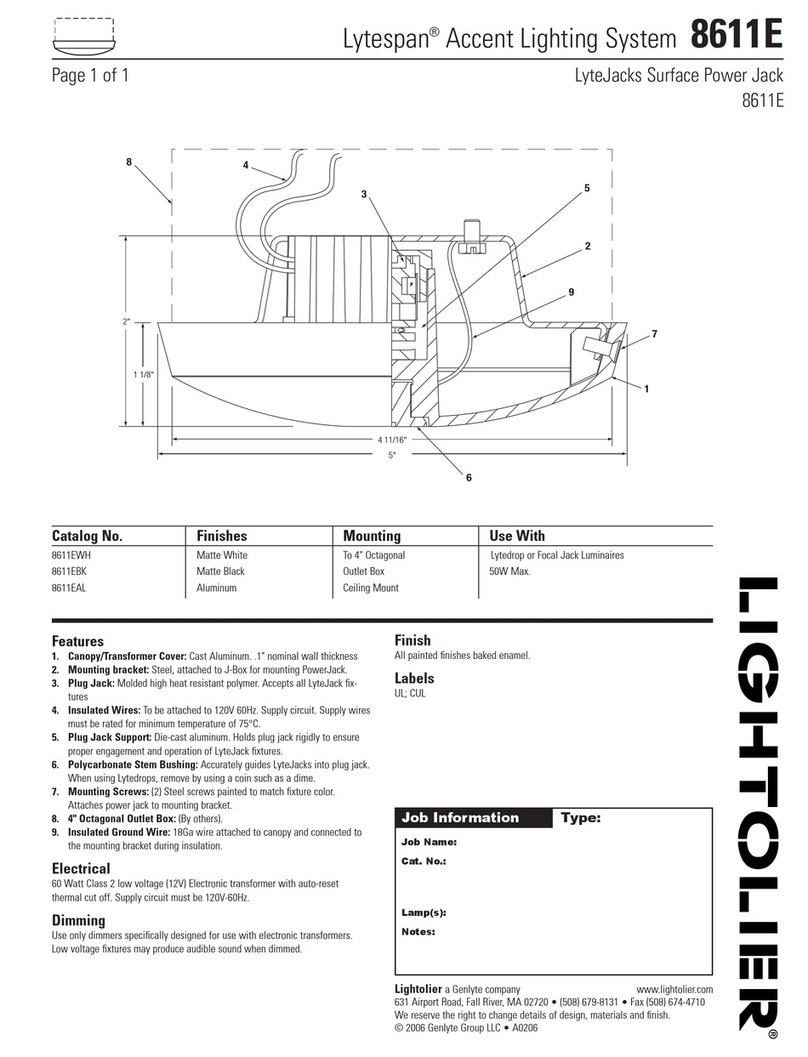
Lightolier
Lightolier Lytespan 8611E specification
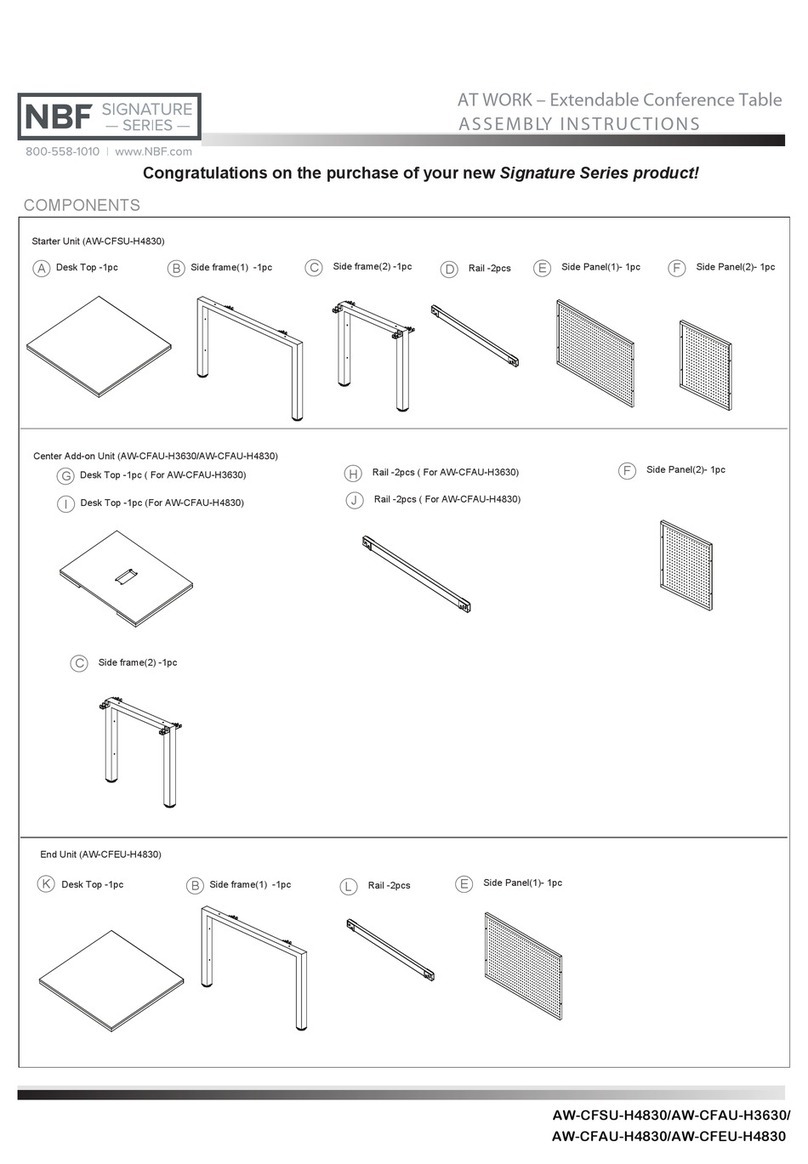
nbf
nbf Signature Series Assembly instructions
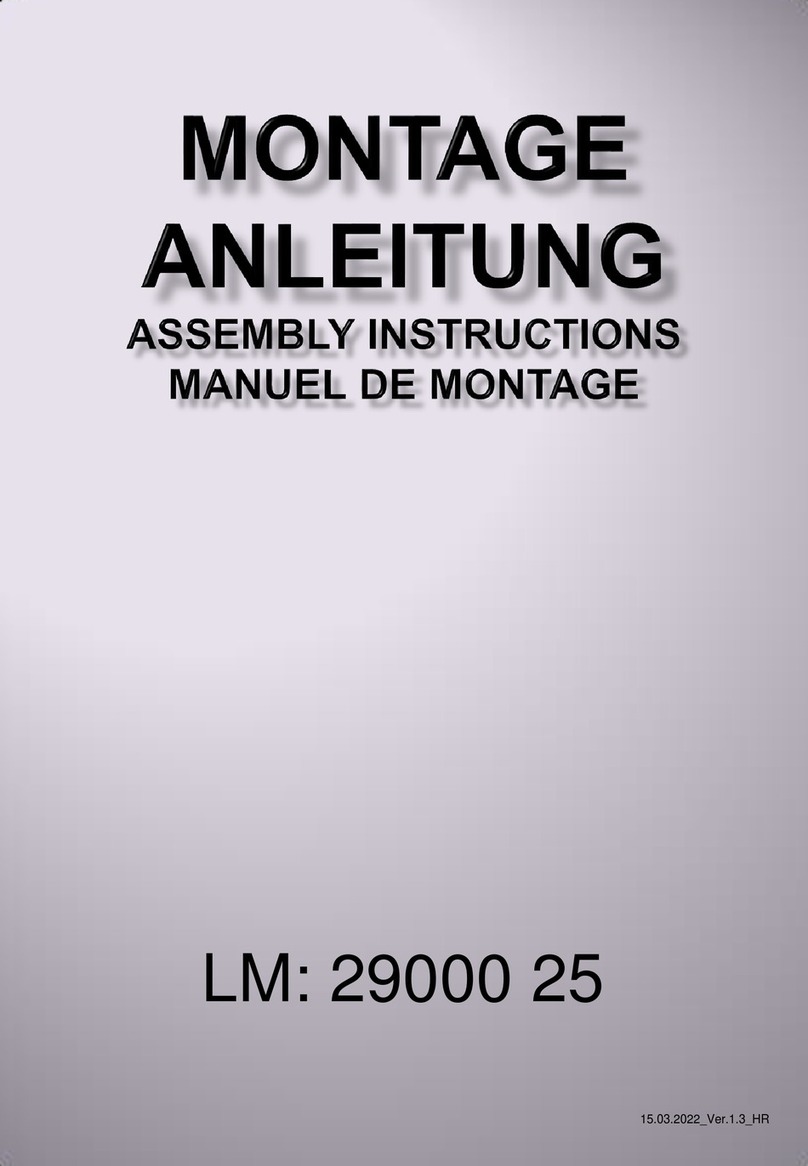
Himolla
Himolla 29000 25 Assembly instructions

Furniture of America
Furniture of America Bridgewater FOA7490PL Assembly instructions
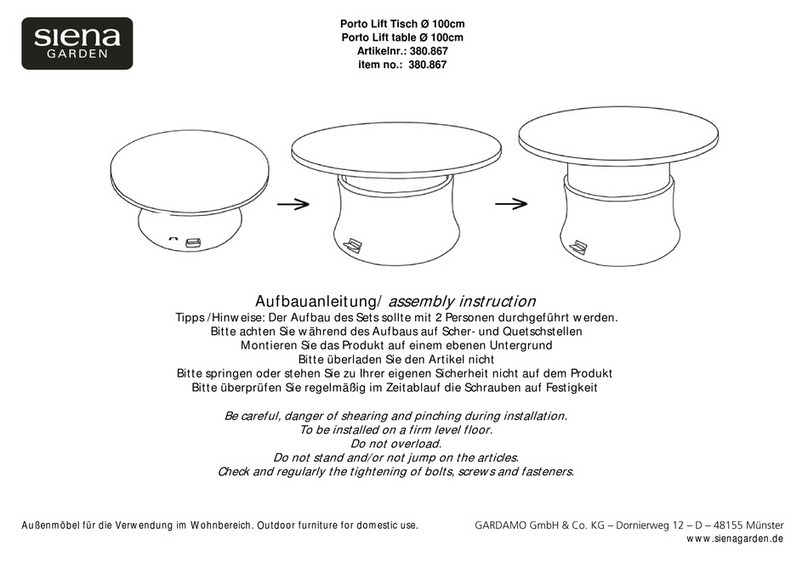
siena GARDEN
siena GARDEN 380.867 Assembly instruction
